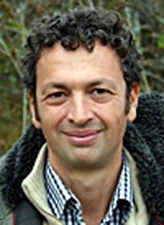Giulio Di Toro

The 2008 Outstanding Young Scientist Award is awarded to Giulio Di Toro for his extraordinary contributions in fault and earthquake mechanics.
It is only 4 years since Di Toro completed his Ph. D in 2003, but he has already published 15 peer-reviewed papers, including 2 in Nature and 1 in Science. Di Toro first conducted analyses of pseudotachylites on spectacular outcrops within the Adamello pluton, in collaboration with G. Pennacchioni. Constraining the conditions of formation of pseudo-tachylytes and estimating earthquake source parameters of an exhumed seismic fault, Di Toro determined that frictional heat is by far the largest energy component dissipated during an earthquake. At Brown University Di Toro learnt about deformation processes from laboratory experiments, under the guidance of T. Tullis. The result was a project that culminated in his Nature (2004) paper. Later Di Toro and S. Nielsen analyzed frictional melting processes theoretically, calculating slip weakening distances (Nature, 2005). No one, before them, would ever imagine that speed of dynamic rupture propagation could be determined from natural pseudotachylites.
At Kyoto University Di Toro performed frictional melting experiments with T. Shimamoto and T. Hirose, showing that frictional melt acts as a lubricant for fault motion, enhancing fault instability during large earthquakes (Science, 2006). Presently, Di Toro collaborates with L. Burlini at ETH-Zurich, studying the source of seismic tremors, both volcanic and non volcanic (Geology, 2007).
At Padova, Giulio has recently received an important grant to build a high speed apparatus.
Giulio Di Toro has contributed greatly to our understanding of fault mechanics at seismic slip rates, one of the hottest topics in fault and earthquake mechanics at present. He has become a scientist of truly international standing and is al-ready a charismatic leader worldwide. More important is his demonstration of the significance and power of integrated field, laboratory and theoretical studies filling the gap between fault and earthquake mechanics. Giulio’s broad interest and enthusiasm has bound people from different disciplines on focused interdisciplinary researches.
